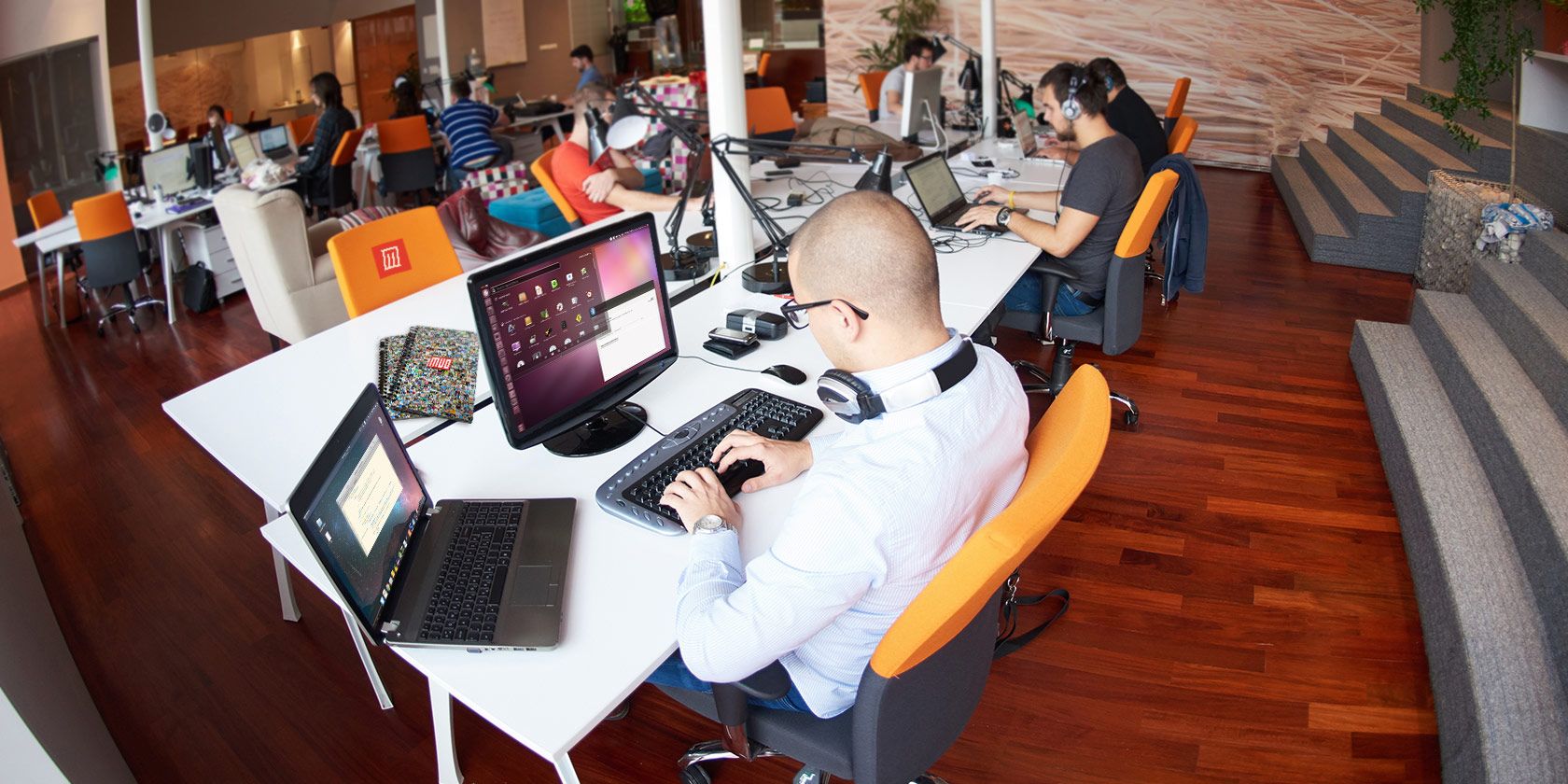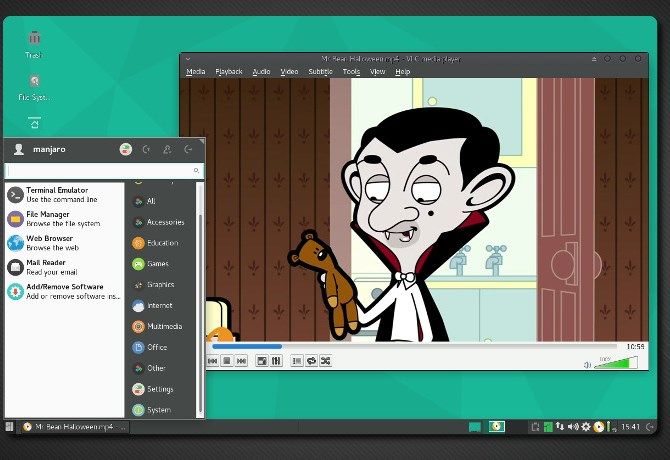We really want you to start using Linux. But as there are so many Linux operating systems to choose from, some of which we've featured here, it can be tricky to decide which one to get started with.
Which is most productive? What about games? Should you choose a Linux distro that focuses on media production? What about programming? Or is there one that covers all bases?
In the end, it comes down to personal preference, but if you're looking for a recommendation, the MakeUseOf Linux contributors all run Linux either as their main OS or as a dual-boot alternative. While we already have a list of the top Linux distros, here you can see which Linux operating systems we're actually using in 2017.
1. Manjaro Linux
Austin Luong is a recent convert to Manjaro Linux, a new distro based on Arch Linux, available in 32- and 64-bit versions.
"I've been using Manjaro for a few months now, having switched from my default operating system, Arch Linux. Considering how Manjaro is based off of Arch though, it wasn't much of a change at all (they have a thing for green and black colour schemes)."
Many Linux distributions are based on previous versions. How does this benefit Manjaro, and more importantly, the user? Austin tells me that "Manjaro inherits many benefits from Arch Linux, the up-to-date packages and easy upgrade system being the main draws. However, it's designed to be much easier to use: the installation process is automated, and you can install programs using a graphical interface by default. Not needing to install everything from the ground up is nice too."
Making apps easier to install is important. Just look at the process on a smartphone or tablet compared to a desktop computer. Manjaro does well here, but what about the desktop? Manjaro Linux ships with XFCE, which Austin loves "for how malleable and lightweight it is. For instance, I have a mail watcher plugin set up on the desktop to keep track of multiple email accounts. Along with this, Pidgin is set up to communicate with my colleagues on Slack, making collaboration quick and easy."
The light desktop also makes Manjaro suitable for older hardware. "It has the added benefit of keeping things fast, perfect for an old laptop like mine."
2. Elementary OS
After trying many Linux distros, Bertel King has settled on Elementary OS, which we recently featured and reviewed.
"I've used various distros over the years. After a while, I grew tired of maintaining my desktop and wanted simplicity. This was why Chrome OS, a mainstream Linux distro with serious commercial backing, appealed to me. But in the end, Chrome OS lacked too many features, and I found myself frustrated with the direction Google took the project."
After first looking at Loki, Bertel finally found his way to Elementary OS, and found an ideal balance between simplicity and power. "I have all the tools I need to do work, and distractions are kept at a minimum. The distro has a reputation of being good for newbies, but as a writer, I say it's also great for professionals and creatives who need to focus on getting work done. There's a high amount of polish, a solid set of default apps, and an eye for design that set Elementary OS apart from the rest of the pack."
Elementary OS doesn't have the same focus on compatibility with older machines that a distro like, say, Manjaro Linux has, but it certainly looks and feels impressive!
3. Ubuntu (GNOME Desktop)
After trying Lubuntu on an aging Shuttle XPC, Moe Long installed Ubuntu on his main rig. "I've had Ubuntu running on my PC for about four years now. Increased performance yields and the power of the command line eventually converted me from a mostly Windows user to Linux junkie. Out of the box, Linux uses fewer system resources than Windows. Additionally, I've been able to run 16-bit programs, something I couldn't accomplish natively on a 64-bit Windows operating system."
Going light on system resources is important to many users, as is compatibility with older software, something both Windows and macOS seem to have discarded. Interestingly, Moe feels that the GNOME desktop option for Ubuntu is similar to macOS: "The GNOME desktop environment is gorgeous, and aesthetically reminds me of using macOS. That was a main draw for me as I admittedly appreciate a pretty desktop environment."
Ubuntu is a top draw for many switchers from Windows, often enabling newcomers to quickly find a home in the Linux world. "I love how Ubuntu provided a landscape where I was able to ease into Linux. Initially, I relied on the Ubuntu Software Center. But as I became more comfortable navigating the Linux landscape I relied on the command line. Most of my required programs are still available natively or through Wine, and performance is substantially better when compared to Windows."
While most apps are available across Linux operating systems, you'll certainly find a host of recognizable names. As Moe enthuses, "My top apps on Linux are Slack, Steam, LibreOffice, Plex, VLC, Sublime Text, and PlayOnLinux. I use Slack, Sublime Text, and LibreOffice for work and productivity. Plex and VLC are my media go-tos. Notably, the Plex Media Server installer for Linux works like a champ. As a gamer, Steam for Linux and the PlayOnLinux frontend for Wine give me my gaming fix."
4. Linux Mint With Cinnamon
Joel Lee has been contributing to MakeUseOf's Linux section longer than any other member of the team. He's currently using Linux Mint 17.3 with Cinnamon on a "four-year-old laptop that has crappy specs. I've tried all kinds of operating systems on it over the years (including Elementary OS, Deepin, OpenSUSE, various flavors of Ubuntu, and Windows 10) but Linux Mint provides the best balance between performance and usability."
Joel hasn't always been a fan of Linux Mint, however. Like many other users, he's spent some time finding a version of Linux that he's comfortable with. "Prior to this, I was most happy with Ubuntu MATE, due to the simplicity of the MATE desktop -- but it wasn't customizable enough in some areas, whereas the Cinnamon desktop has a bit more magic and flexibility without sacrificing any speed. Another bonus is that Linux Mint with Cinnamon is similar enough to Windows to be comfortably used in a dual-boot setup."
Over the years, Joel has had other hardware with Linux installed. "I used to have a netbook (now dead) that ran Lubuntu, which was great because the LXDE desktop was as lightweight as it got yet the system was still compatible with all of Ubuntu's official repositories."
5. Ubuntu With MATE
Now it's my turn. Like many recent converts, my main exposure to Linux came via the Raspberry Pi and the Debian-based Raspbian operating system. Before I became editor of the Linux section, I was contributing to print magazine Linux User & Developer on Raspberry Pi topics -- lately I've been producing features and tutorials for the same title on mainstream Linux.
At home, I run a dual-boot HP Envy 17" 2015 model, sharing half my time between Windows 10 and Ubuntu. Until recently, I put up with the Unity desktop, but have found MATE a far more productive alternative.
Running games and word processing tools (switching between LibreOffice and Wine-supported Word 2007, probably out of habit) alongside Skype, Audacity and a handful of other creative and productivity apps, the only reason I still switch back to Windows is either for games or because I'm yet to find a Linux email client to rival Outlook.
Now You Know, But What Can You Learn?
These are just five ways to run Linux operating systems. As you may know, there are hundreds of different distros (and that's a conservative description) and it can be tricky to make a decision. Whether our thoughts on our preferred distros have pointed you in one direction or another, always take the time to try out a distro fully before committing to it full time -- especially if you're switching from Windows!
What you should have picked up from all of this is that it can take a while to settle for a particular operating system. But given how disruptive a Windows update can prove (especially if we consider Vista, Windows 8 and Windows 10), this is hardly a bad thing. Don't like the latest Ubuntu update? You can switch to a different distro (or simply switch the desktop) without abandoning everything you've learned.
Which Linux distro are you using? Why? Tell us in the comments!
Image Credit: dotshock/Shutterstock


